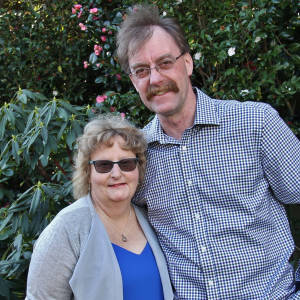Day in the hills
I did the unthinkable today and managed surprising well, came out grinning from ear to ear - awesome!
With stocktake now behind us my cousin and her hubby decided we would climb Latham's Hill track, I wasn't so sure as my cardio is not quite where it should be as yet but was prepared to give it a go.
It starts with a gentle climb over farmland leading into manuka and fern scrub, then regenerating bush before dipping into an attractive valley. I was huffing and puffing not far into the track but kept on plodding on listening to the call of tui's and bellbirds in the tree tops and was accompanied by fantails flitting around. Once emerging out onto an old pa site the sweeping views across the Rangitaiki Plains out to the Pacific Ocean and towards the settlement of Kawerau were amazing. The local coastguard had reported 200 boats crossing the bar this morning for some fishing, I can see why the sea so calm.
Whakatane is situated just under the hills in the distance. Out to the left is Moutohora Island or Whale Island. The island is a remnant of a complex volcano which has eroded leaving two peaks. Maori occupied the island until the early 19th century. Ngati Awa and Tuhoe people continued to visit for food gathering and other purposes. Sulfur was extracted in the late 1800s and stone was quarried in the early 1900s.There is still an area of volcanic activity and there are hot springs on the island in Sulphur Valley, McEwans Bay, and Sulphur Bay.
Since 1965 Moutohora has been a wildlife refuge. All introduced species, except wasps, have been removed. Tuatara were released on the island in 1996 and numbers of tieke (North Island saddleback) were transferred from Repanga (Cuvier Island) off the Coromandel Peninsula in 1999. North Island brown kiwis have been transferred gradually since 2001. This is an important seabird island, with New Zealand's largest colony of grey-faced petrels - 95,000 breeding pairs.
On the way down we saw these Wood-ear Jelly fungi Auricularia cornea, they are found on dead wood any time after rain. It dries out in dry conditions but swells when it gets wet. It forms flabby cup or ear-shaped brackets of a dull grey-brown colour, becoming a blue-grey colour as they age. It is edible and is used in Chinese dishes. It was exported from New Zealand, mainly from the Taranaki area in the latter part of the 1800's, by a Chinese man called Chew Chong. Export of this fungus continued until the 1960's, when the Taiwanese discovered ways of commercially producing it on sawdust.
The image is much better in large.
We had a great day, the views were amazing and I really enjoyed being amongst the bush, so glad I didn't 'chicken out'.

Comments
Sign in or get an account to comment.


